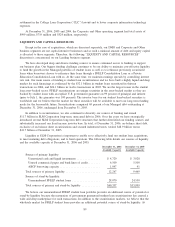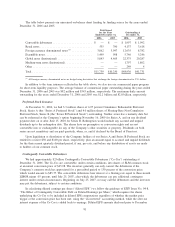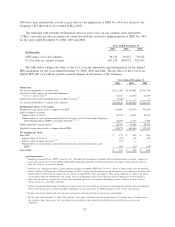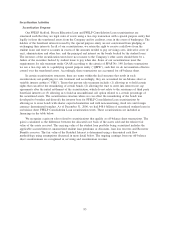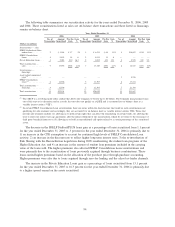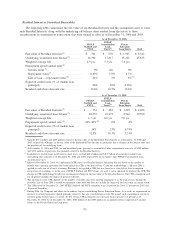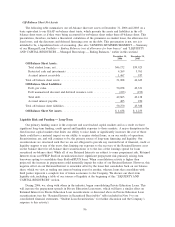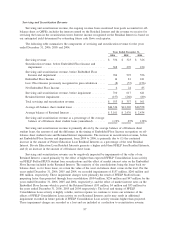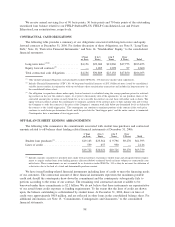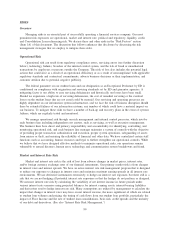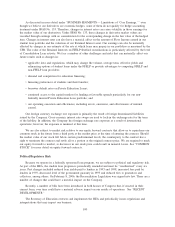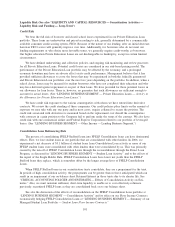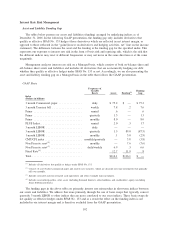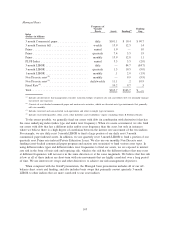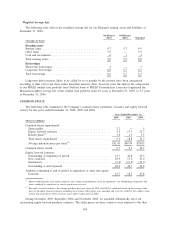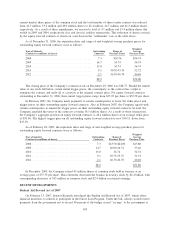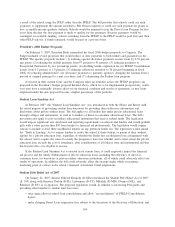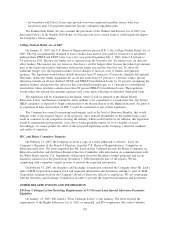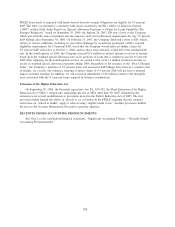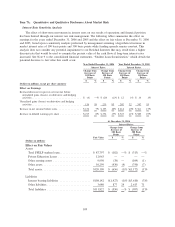Sallie Mae 2006 Annual Report Download - page 100
Download and view the complete annual report
Please find page 100 of the 2006 Sallie Mae annual report below. You can navigate through the pages in the report by either clicking on the pages listed below, or by using the keyword search tool below to find specific information within the annual report.RISKS
Overview
Managing risks is an essential part of successfully operating a financial services company. Our most
prominent risk exposures are operational, market and interest rate, political and regulatory, liquidity, credit,
and Consolidation Loan refinancing risk. We discuss these and other risks in the “Risk Factors” section
(Item 1A) of this document. The discussion that follows enhances that disclosure by discussing the risk
management strategies that we employ to mitigate these risks.
Operational Risk
Operational risk can result from regulatory compliance errors, servicing errors (see further discussion
below), technology failures, breaches of the internal control system, and the risk of fraud or unauthorized
transactions by employees or persons outside the Company. This risk of loss also includes the potential legal
actions that could arise as a result of an operational deficiency or as a result of noncompliance with applicable
regulatory standards and contractual commitments, adverse business decisions or their implementation, and
customer attrition due to potential negative publicity.
The federal guarantee on our student loans and our designation as an Exceptional Performer by ED is
conditioned on compliance with origination and servicing standards set by ED and guarantor agencies. A
mitigating factor is our ability to cure servicing deficiencies and historically our losses have been small.
Should we experience a high rate of servicing deficiencies, the cost of remedial servicing or the eventual
losses on the student loans that are not cured could be material. Our servicing and operating processes are
highly dependent on our information system infrastructure, and we face the risk of business disruption should
there be extended failures of our information systems, any number of which could have a material impact on
our business. To mitigate these risks we have a number of back-up and recovery plans in the event of systems
failures, which are regularly tested and monitored.
We manage operational risk through our risk management and internal control processes, which involve
each business line including independent cost centers, such as servicing, as well as executive management.
The business lines have direct and primary responsibility and accountability for identifying, controlling, and
monitoring operational risk, and each business line manager maintains a system of controls with the objective
of providing proper transaction authorization and execution, proper system operations, safeguarding of assets
from misuse or theft, and ensuring the reliability of financial and other data. We have centralized certain staff
functions such as accounting, human resources and legal to further strengthen our operational controls. While
we believe that we have designed effective methods to minimize operational risks, our operations remain
vulnerable to natural disasters, human error, technology and communication system breakdowns and fraud.
Market and Interest Rate Risk
Market and interest rate risk is the risk of loss from adverse changes in market prices, interest rates,
and/or foreign currency exchange rates of our financial instruments. Our primary market risk is from changes
in interest rates and interest spreads. We have an active interest rate risk management program that is designed
to reduce our exposure to changes in interest rates and maintain consistent earning spreads in all interest rate
environments. We use derivative instruments extensively to hedge our interest rate exposure, but there still is a
risk that we are not hedging all potential interest rate exposures or that the hedges do not perform as designed.
We measure interest rate risk by calculating the variability of net interest income in future periods under
various interest rate scenarios using projected balances for interest earning assets, interest-bearing liabilities
and derivatives used to hedge interest rate risk. Many assumptions are utilized by management to calculate the
impact that changes in interest rates may have on net interest income, the more significant of which are related
to student loan volumes and pricing, the timing of cash flows from our student loan portfolio, particularly the
impact of Floor Income and the rate of student loan consolidations, basis risk, credit spreads and the maturity
of our debt and derivatives. (See also “Interest Rate Risk Management.”)
99


